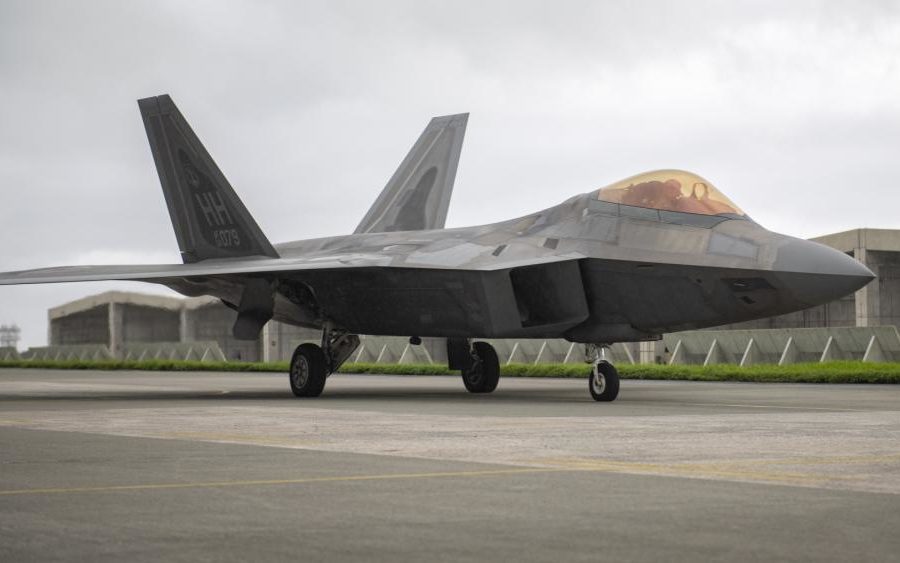The Air Force’s plans to divest its oldest 33 F-22 Raptor fighters met with a sharp rebuke from the House Armed Services Committee, which moved instead to mandate the Air Force maintain the full Raptor fleet and upgrade the older planes to the newest configuration in its version of the 2023 National Defense Authorization bill.
USAF sought to retire the early F-22s, currently rated for training use only because they are expensive to maintain and are increasingly mismatched to the combat-coded versions, reducing their value as training platforms. The roughly $1 billion cost to upgrade those jets was not affordable, Air Force officials said.
But the HASC chairman’s mark, released June 20, would not only block plans to retire the aircraft, but would also direct the service to upgrade all its F-22s to at least “Block 30/35 mission systems, sensors, and weapon employment capabilities.”
The House committee draft goes further than what the Senate Armed Services Committee included in its version of the NDAA, calling in that bill for no F-22 retirements without “a detailed written plan for training F-22 aircrew while avoiding any degradation in readiness or reduction in combat capability.”
In a background briefing, a HASC staff member told reporters last week that ensuring every F-22 in the inventory is combat capable is the bipartisan, consensus view of the committee. A second staff member called preserving the jets “risk mitigation.”
“When we let the Air Force curtail the program back in 2010 at 187 airplanes at the time, they told us that the training capacity would always be available to meet contingency requirements, if and when needed, along with the 234 F-15Cs,” the staff member said. “Now that the Air Force is retiring all their F-15Cs, they’ve cut the buy in half for F-15EX, [the Next Generation Air Dominance program] has slid further to the right than what they originally told us, and now they want to reduce their F-22 capacity. We think there’s significant risk in meeting future air superiority requirements. And so we’re holding the Air Force accountable to their commitment to have the training-coded jets combat capable.”
The bill includes exceptions allowing the Secretary of the Air Force to retire F-22s and go below the minimum of 186 fighters if any given aircraft is deemed “no longer mission capable and uneconomical to repair,” such as after an accident.
The Air & Space Forces Association praised the move in a statement, noting that building fighter capacity is a priority for building up effective combat air power. “AFA is gratified that lawmakers see the need to protect these world’s greatest fighter jets from being retired prematurely,” the statement said. “The Air & Space Forces Association could not agree more that modernizing them to the most advanced configurations is one of the most cost-effective means of rapidly adding to USAF combat capability.”
The House committee will meet on June 22 to mark up its version of the NDAA. Once the measures clear their respective committees, they must be approved by the full chambers, and then reconciled in a conference committee.
AWACS
House lawmakers also challenged Air Force plan to retire 15 E-3 AWACS Sentries, roughly half the fleet. The committee’s bill allow just 10 E-3s to be retired until the Air Force reports back on its future airborne warning and control plans, and on developing air moving target indication, battle management, and command and control capabilities; the impact of retiring 15 AWACS planes; and a detailed comparison between the E-3s and the Air Force’s planned replacement, the E-7 Wedgetail.
A-10
The House Armed Services Committee markup accepted Air Force plans to start cutting its A-10 “Warthog” fleet, and took the additional step of reducing the minimum number of A-10s the Air Fore must maintain from 171 to 153. That move appears to support the service’s plans to replace 21 Indiana Air National Guard A-10s with F-16s. Congress has long protected the beloved close air support Warthogs from any plan to retire the jets, but this year both House and Senate committees appear poised to allow some retirements, a major victory for Air Force leaders who note that the Warthog is ill-suited to missions against sophisticated enemies.
